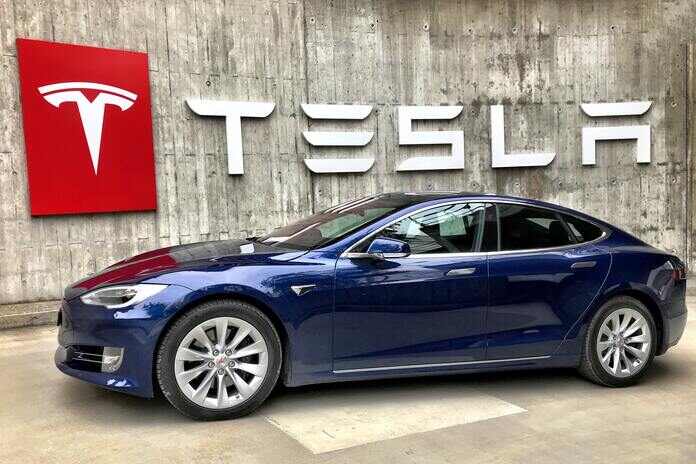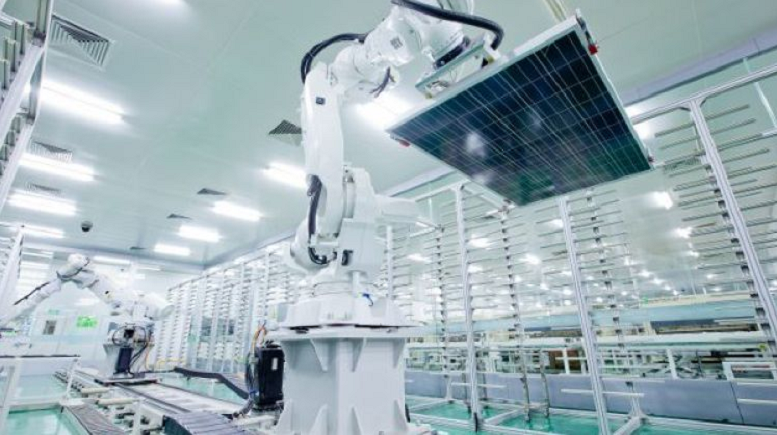Tesla’s (NASDAQ:TSLA) 10-quarter streak of beating Wall Street expectations came to an end when it reported lower-than-expected earnings for the third quarter of 2023.
The electric vehicle (EV) giant reported earnings per share of 66 cents for the quarter, a decrease from the previous year’s $1.05 and below the Consensus Estimate of 72 cents.
Throughout the third quarter, Tesla cut prices on its inventory vehicles and existing models, negatively impacting profits. Total revenues reached $23,350 million, showing a 9% year-over-year increase, but falling short of the consensus estimate of $24,381 million.
Tesla’s operating margins dropped by 964 basis points year over year to 7.6% in the quarter, also falling below the expected 7.9%. This underperformance was attributed to the high costs associated with scaling up the production of new battery cells, the Cybertruck, and other large projects. Continued reductions in average selling prices (ASPs) for models further impacted the margins.
In an effort to increase affordability and boost deliveries, Tesla has been offering discounts and incentives in the United States. However, despite these measures, Tesla’s share of the EV market in the United States declined from 60% in the first quarter to 50% in the third quarter.
Management remains committed to its target of achieving around 50% growth in deliveries in the near future, with an expectation of reaching 1.8 million units in deliveries for 2023.
Key Highlights
Tesla’s third-quarter production reached 430,488 units, consisting of 416,800 Model 3/Y units and 13,688 Model S/X units, an 18% year-over-year increase, surpassing the estimate of 415,645 units.
The company delivered 435,059 vehicles in the same period, marking a 27% year-over-year rise and exceeding the expected 428,141 units.
Model 3/Y deliveries reached 419,074 vehicles, showing a 29% year-over-year growth and surpassing the projection by 7,999 units. Deliveries of the Model S/X totaled 13,688 units, down 31% from the previous year and below the estimate of 17,066 units.
Total automotive revenues were $19,625 million, a 5% year-over-year increase, beating the estimate of $21,092 million. This figure included $554 million from the sale of regulatory credits for electric vehicles, which increased by 93.7% year over year.
Automotive sales, excluding leasing and regulatory credits, amounted to $18,582 million, falling short of the projection of $19,949 million due to lower-than-expected ASPs.
Automotive gross profit was $3,668 million, with an automotive gross margin of 18.6%, down from 27.9% reported in the third quarter of 2022 but higher than the forecasted 18.2%. This was due to lower-than-expected cost of automotive sales.
Energy Generation and Storage revenues for the third quarter of 2023 reached $1,599 million, surpassing the year-ago figure of $1,117 million and beating the estimate of $1,570 million. Energy storage deployments increased by 90% year over year to 4 GWh, thanks to the ramp-up of the Megapack factory in California. However, solar deployments declined both sequentially and yearly, reaching 49 MW, lower than the forecast of 103.8 MW.
Services and Other revenues amounted to $2,166 million, a 31.6% year-over-year increase, but missing the estimate of $2,351 million. Supercharging, insurance, and body shop & part sales contributed to the growth.
Financials
As of September 30, 2023, Tesla held cash and cash equivalents of $26,077 million, compared to $22,185 million on December 31, 2022.
Net cash provided by operating activities reached $3,308 million in the third quarter of 2023. Capital expenditure for the quarter was $2,460 million.
Tesla generated a free cash flow (FCF) of $848 million during the reported quarter, a decline from the $3,297 million generated in the same period of the previous year.
Long-term debt and finance leases, net of the current portion, amounted to $2,426 million, up from $1,597 million on December 31, 2022.
Key Metrics
As investors analyze revenue and earnings changes year-over-year and their comparison with Wall Street expectations, certain key metrics offer a more accurate reflection of a company’s financial health. Here’s how Tesla performed in the recently reported quarter concerning these key metrics:
Total vehicle deliveries: 435,059 versus an average estimate of 439,208 by seven analysts.
Model S/X deliveries: 15,985 compared to an average estimate of 16,872 based on five analysts.
Model 3/Y deliveries: 419,074 versus an average estimate of 425,039 by four analysts.
Solar deployed: 49 MW versus an average estimate of 84.83 MW based on two analysts.
Storage deployed: 3,980 MWh versus an average estimate of 3,926.66 MWh by two analysts.
Revenues- Energy generation and storage: $1.56 billion versus an average estimate of $1.63 billion. This represents a year-over-year change of +39.6%.
Revenues- Automotive sales: $18.58 billion versus an average estimate of $20.61 billion.
Revenues- Services and other: $2.17 billion compared to an average estimate of $2.19 billion by seven analysts. This represents a change of +31.7% year over year.
Revenues- Automotive regulatory credits: $554 million versus an average estimate of $324.93 million based on five analysts. This represents a change of +93.7% year over year.
Revenues- Automotive leasing: $489 million versus an average estimate of $597.34 million by five analysts. This represents a year-over-year change of -21.3%.
Total Automotive Revenue: $19.63 billion versus an average estimate of $19.42 billion. This represents a year-over-year change of +5%.
Gross profit- Total Automotive: $3.67 billion versus an average estimate of $3.80 billion.
In conclusion, as Tesla continues its strategy of slashing vehicle prices to gain dominance in the EV market, it faces challenges as margins may decline in the future. Investors remain cautious about a turnaround until this trend shifts.
Featured Image: Unsplash Tesla © Fans Schweiz







